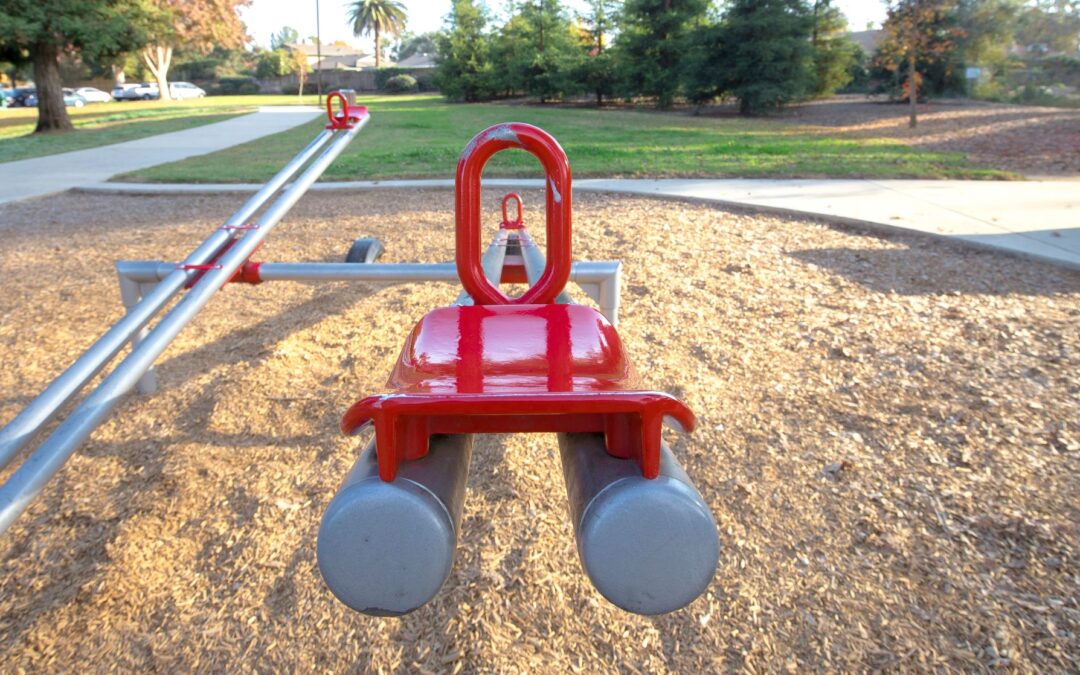I remember running out to the playground during recess as a kid and climbing onto the teeter-totter with friends. As we’d climb on, usually one at time, I was filled with anticipation. Will my friend sitting opposite from me “play nice” where we can both enjoy the fun of taking turns going up and down? Or will my friend jump off her seat just as I’m getting to the highest point of my ride, causing me to plummet straight down and bang back onto the ground below? (For the record, I’m sure I caused a few friends to go “thud” on the teeter-totter. Kids, right?)
And I remember sometimes sitting still and balanced across from someone else on the teeter-totter. Our feet weren’t touching the ground, and we weren’t in motion. We had reached equilibrium. We were in balance, if just for a moment or two.
I think about that teeter-totter today in light of our efforts to become higher quality leaders and better coworkers. There are times when the stillness of equilibrium seems like a desirable place to be. And we can always go play on the balance beam for a while if that’s what we really want. But if we’re growing as individuals and as organizations, it’s much more like a teeter-totter than a balance beam.
As leaders, I think we can take a few lessons from the teeter-totter.
(1) No one can teeter-totter all alone. Believe me, I’ve tried. You end up stuck on the down-side. Do you, as a leader, have a sounding board to sit opposite you and help you think though your options and decisions? How are you getting input and ideas from others to get the teeter-totter into motion? When you arrive at your decision, how do we make sure everyone gets off the teeter-totter without needless injury?
(2) Pay attention to your team members who are on the teeter-totter together. Are there situations or challenges that are causing them to go “thud”? Do they have the skills and resources they need to keep moving through the ups and downs? Are they having fun? Are they “playing nice”?
(3) Know when it’s time to climb on or climb off the teeter-totter. As the leader, it is important to remember that you are inspiring others to make decisions and work toward the vision. This requires your support and engagement, but doesn’t mean you need to be the one making the teeter-totter go up and down. Recognize when to jump on. And recognize when it’s best for you to jump off the teeter-totter and head over to the swing set.
(4) The final leadership lesson from the teeter-totter is this: when you cause someone else to go “thud” onto the ground, offer them a sincere apology.
Keep Calm and Teeter On, Friends!




